From oyster shells to orange peel, food waste could be the design material of the future
 Photography by Emeli Höcks and Carolina Härdh
Photography by Emeli Höcks and Carolina Härdh
Words by Ellinor Thunberg
‘Can I try it?’ I ask, peering down at a curious handmade bench. The answer, from designers Carolina Härdh and Emeli Höcks, is yes, of course. I sit down carefully but soon realise there’s no need for extra caution: the bench, Besitt, is both sturdy and strong – with a core of heavy-duty cardboard pipes, reinforced by a single piece of wood. But it’s the exterior that is truly fascinating: although the bench appears to be made from limestone, it is in fact a biomaterial made from oyster shells, paper, bone glue and potato starch.
We’re at the Nordic-Japanese restaurant VRÅ in Gothenburg, Sweden, where Härdh and Höcks are due to give a talk – and have brought along their creation. The duo have been designing with food waste for several years, both individually and as a team.
Höcks recalls experimenting for weeks with different recipes in her kitchen: ‘My interest started when I did my bachelor’s degree, and I thought it was hard to find a good way of working as a design student. I decided to develop my own material based on certain criteria, such as it being local, non-toxic and biodegradable as well as having an aesthetic value and strength.’
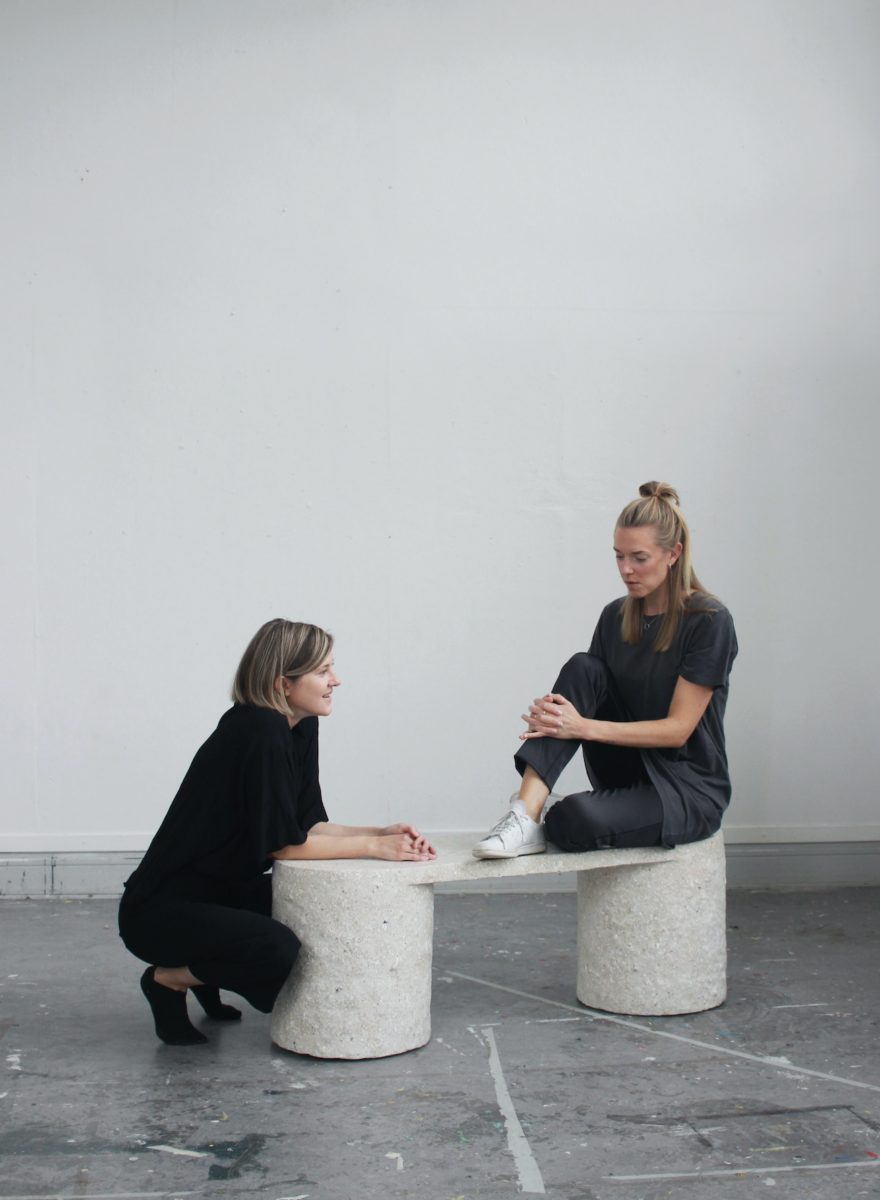 A portrait of Carolina Härdh and Emeli Höcks. Photography by Carolina Lingh
A portrait of Carolina Härdh and Emeli Höcks. Photography by Carolina Lingh
She experimented with, among other things, coffee grounds, eggshells and paper, turning the resultant material into beautiful sculptures. Härdh was provoked by the lack of sustainability in the field and was also searching for new ways when she turned to food waste.
‘I was in a restaurant having oysters and got curious… The shells are so beautiful, like a keepsake, so I asked what they do with them after, and if I could bring mine home,’ she says. When she learned that restaurants just throw away the oyster shells, she started reaching out – but most establishments were reluctant to share their waste. ‘It was hard for me to get access, but I finally found restaurants willing to share,’ she says.
After Höcks and Härdh met in 2019 at a master’s programme at HDK-Valand, the Academy of Art and Design in Gothenburg, they started experimenting with oyster shells and Besitt (2020) is the result of their efforts and collaborative work. Today it sits so naturally, a beautiful and poetic piece of furniture making use of something that would otherwise have been thrown away.
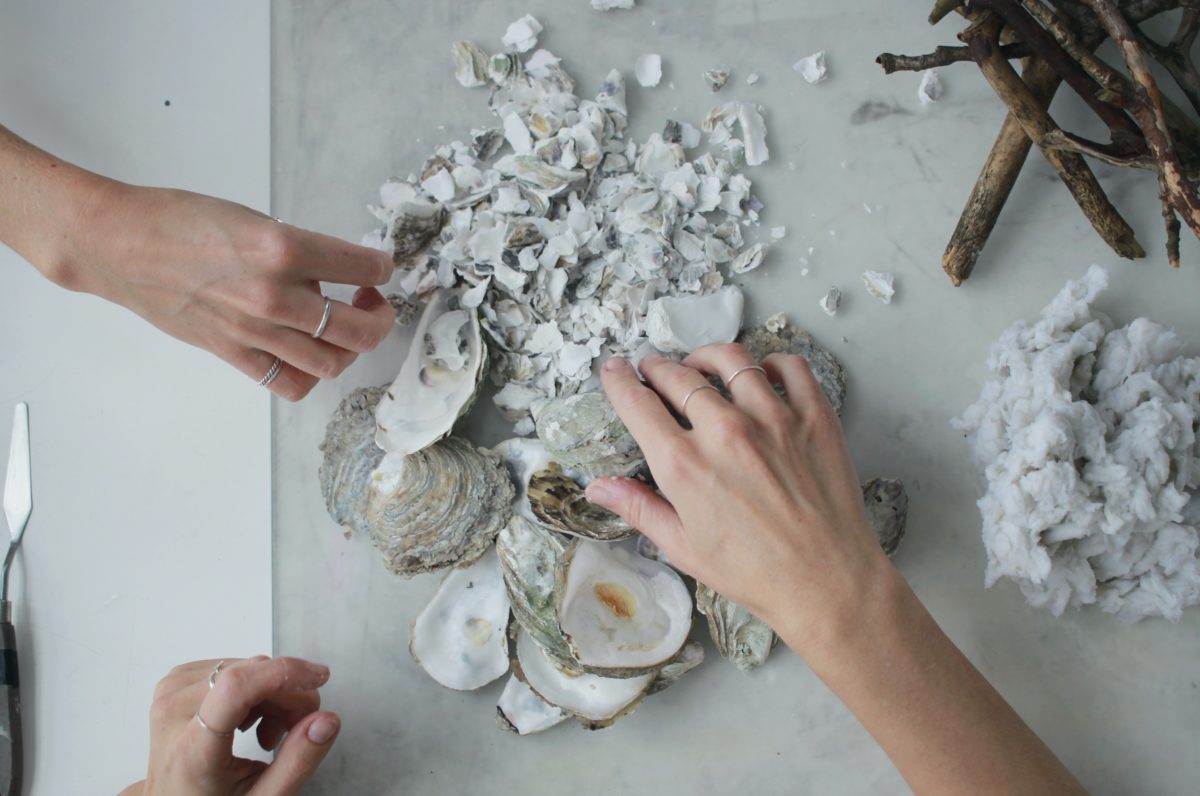 Photography by Carolina Lingh
Photography by Carolina Lingh
But the road to getting here was, well, messy. The designers collected waste bags of oyster shells from restaurants and cleaned them in Härdh’s bathtub. The shells were later crushed manually – hammers turned out to be difficult, but a steel pole worked better, like mashing the ingredients for a mojito. Not your average mojito, of course – one that smells of the sea, with a side of oyster-shell chips everywhere.
‘We felt really embarrassed about the mess and the smell of seaweed and ocean,’ says Härdh. ‘In our second year of the master’s programme we got our own room.’ Luckily, the finished product is smell- free and right now the duo is working on objects for the restaurant Bulot by Emil Bjelke and Gabriel Melim Andersson, opening in Gothenburg in April 2022. Höcks and Härdh are secretive about what exactly it is that they are creating, but oyster shells will be involved.
They both feel that food waste design has gained more recognition in recent years and that a sustainable and more circular design scene is a must going forward. ‘We have no other choice; we are not reaching the sustainability goals as it is now, and if we are to do that within a few years we need to be more circular,’ says Härdh.
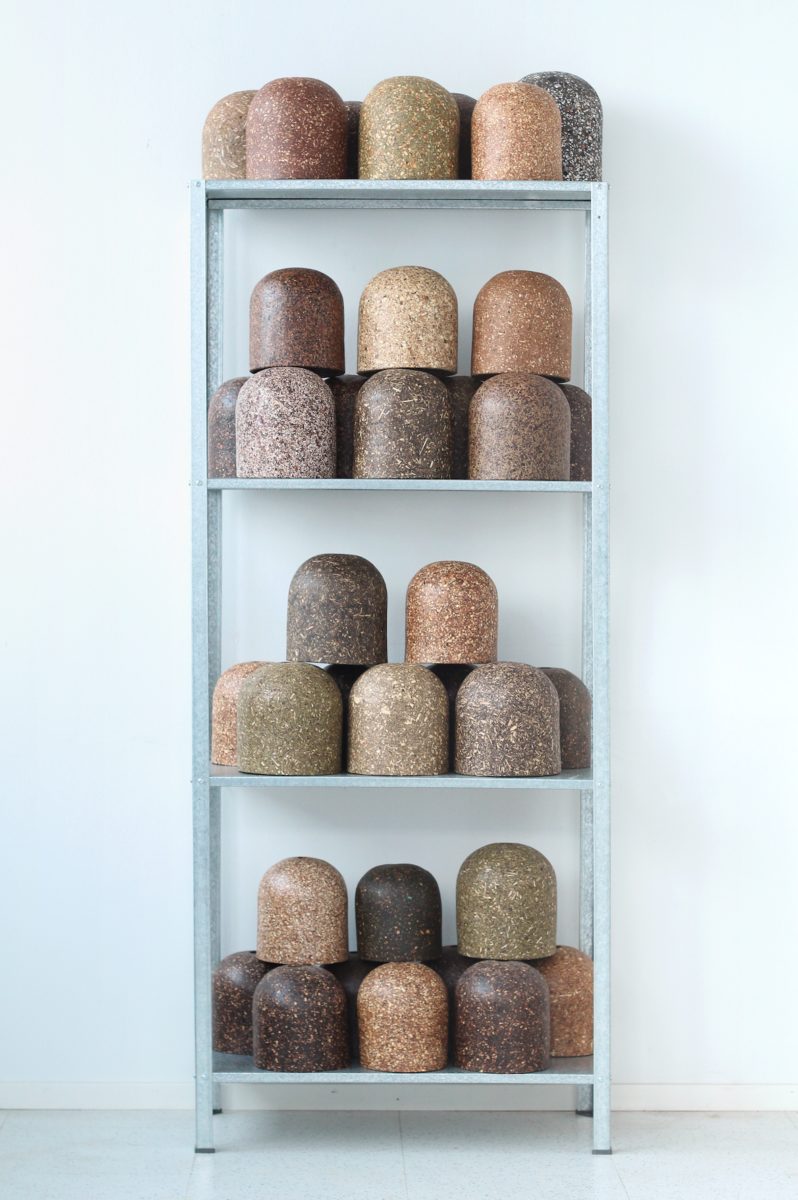 Lampshades made from family biowaste, including orange peel and garden waste. Photography by Tania Malréchauffé
Lampshades made from family biowaste, including orange peel and garden waste. Photography by Tania Malréchauffé
They are not alone in thinking this, or in turning to food waste as a design material. In Finland, Caracara Collective, founded by designers Aleksi Vesaluoma and Aleksi Puustinen, works with orange peel, among other materials. ‘Almost every grocery store in Helsinki has a fresh juice machine these days so we have endless amounts of material just from going to the supermarket,’ says Puustinen.
‘They happily give it away and it’s free.’ It takes around 20 squeezed oranges to create one of Caracara’s lampshades, but the material can take different forms. ‘It’s super versatile: you can shape it by hand, press it into a mould or make sheets which you can laser cut,’ Puustinen says. ‘One lesson we have learned is that if something doesn’t seem to work, just try again with different methods and you will get a nice outcome eventually.’
In order to avoid potential rot or mould, peel products are coated with a vegetable wax and oil combination – mainly carnauba wax and linseed oil, to protect against moisture. Nevertheless, despite many wins, it has been difficult to achieve durability, strength and water resistance, which means the material is still more for indoor use than outdoor, and there are limitations.
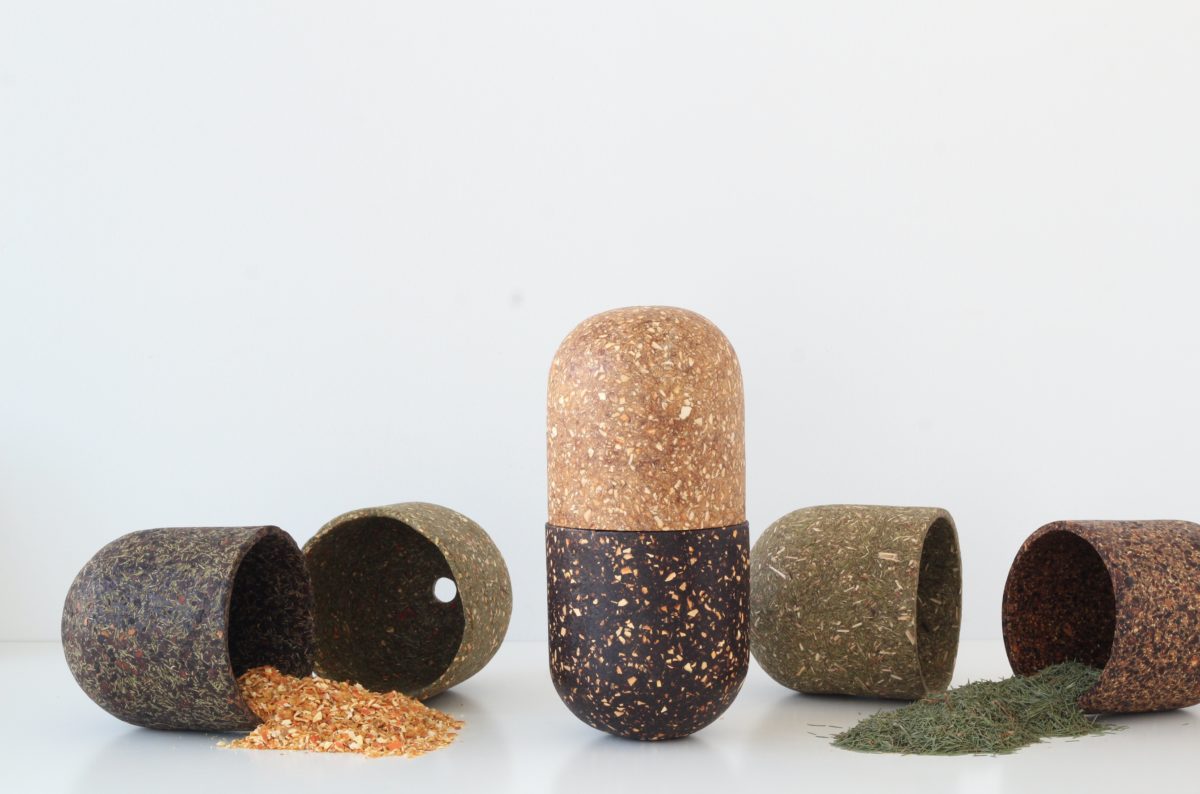 Lampshades made of orange peel and pine needles. Photography courtesy of Caracara Collective
Lampshades made of orange peel and pine needles. Photography courtesy of Caracara Collective
‘You could spray a thick layer of lacquer on top, but that would lose the original idea of making something organic,’ says Puustinen. ‘We have been avoiding that, but it obviously limits the kind of products we can create and that’s why we have been doing lampshades and things that are not so much under load or handled a lot. We’re still working on this; it’s a long process.’
They have both seen the field of food waste design and broader biodesign gain recognition in recent years. ‘It’s great to see that there are even new courses being established at universities,’ says Vesaluoma, referring to initiatives like the multidisciplinary CHEMARTS programme at Aalto University in Finland and the Biodesign MA at Central Saint Martins in London. ‘It has become a trend now.’
With around 88 million tonnes of food wasted in the EU annually, it is clear that something needs to be done. And although circular design alone can’t fix the problem, it can at least help make use of our leftovers. Collaboration is needed, and Vesaluoma is hoping for a future where the knowledge is shared not only among designers and makers, but big corporations too.
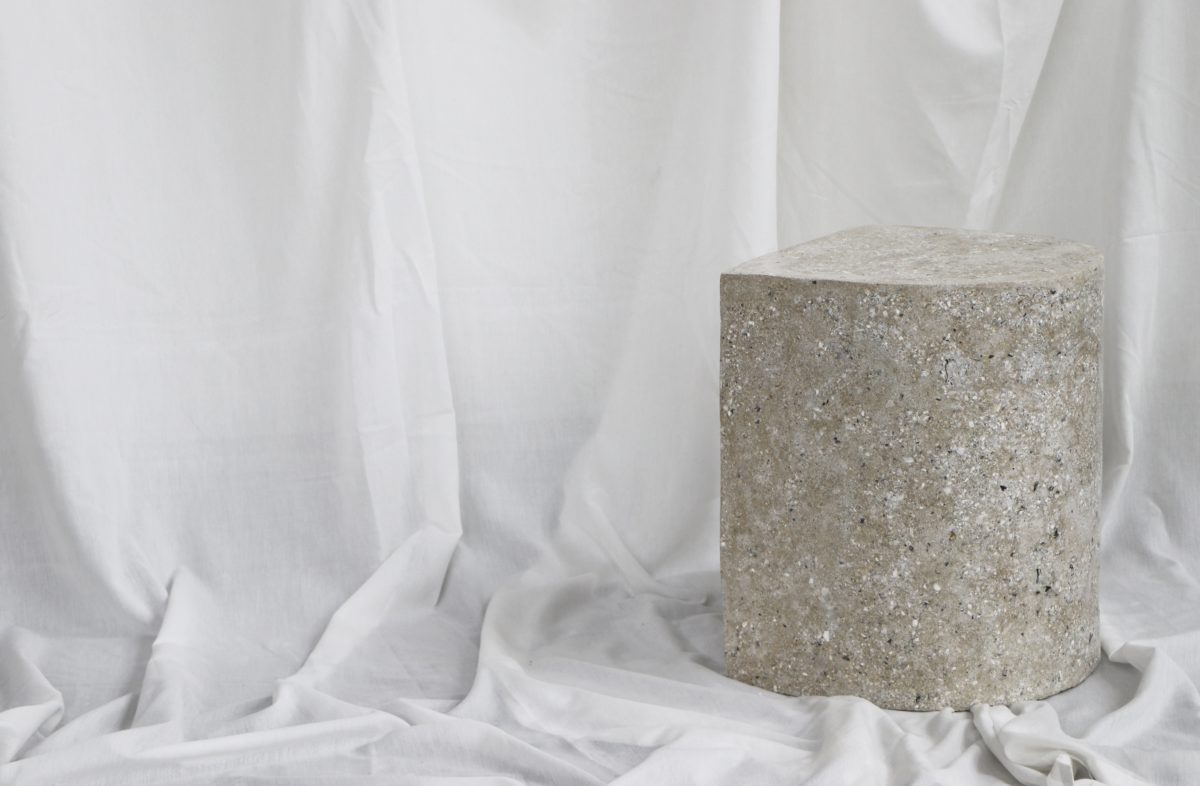 Gigas stool by Carolina Härdh. Photography by Carolina Härdh
Gigas stool by Carolina Härdh. Photography by Carolina Härdh
‘I would like this to move in a direction where there’s more of an open book about these materials, to let people build upon each other’s experiences and knowledge and come up with better solutions together,’ he says.
‘These materials still need a lot of research and development to make them more durable, and to be able to be used on a bigger scale. But with enough focus and resources going into the right things… I think we can get there.’
This article was originally featured in ICON 207: Spring 2022. Read a digital version of the issue for free here
Get a curated collection of design and architecture news in your inbox by signing up to our ICON Weekly newsletter

















